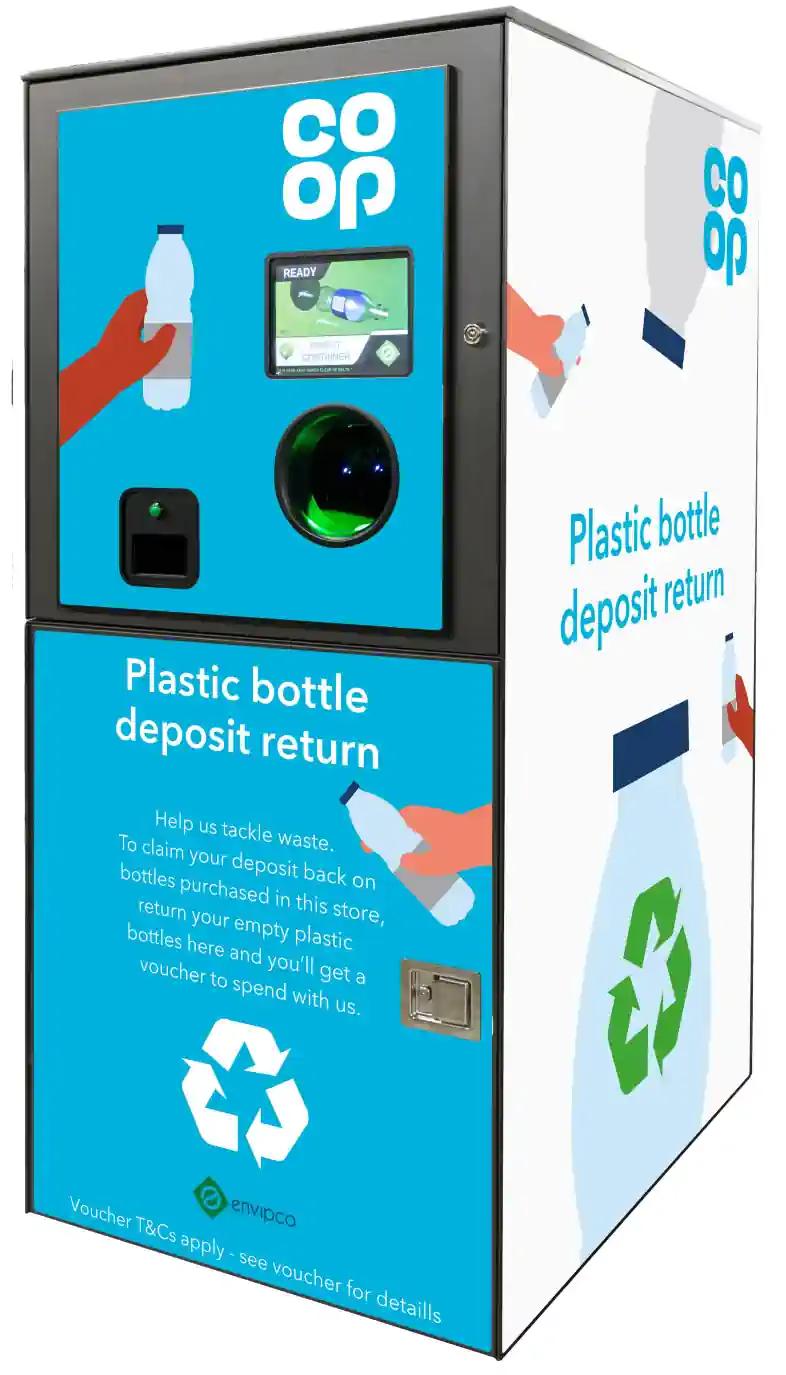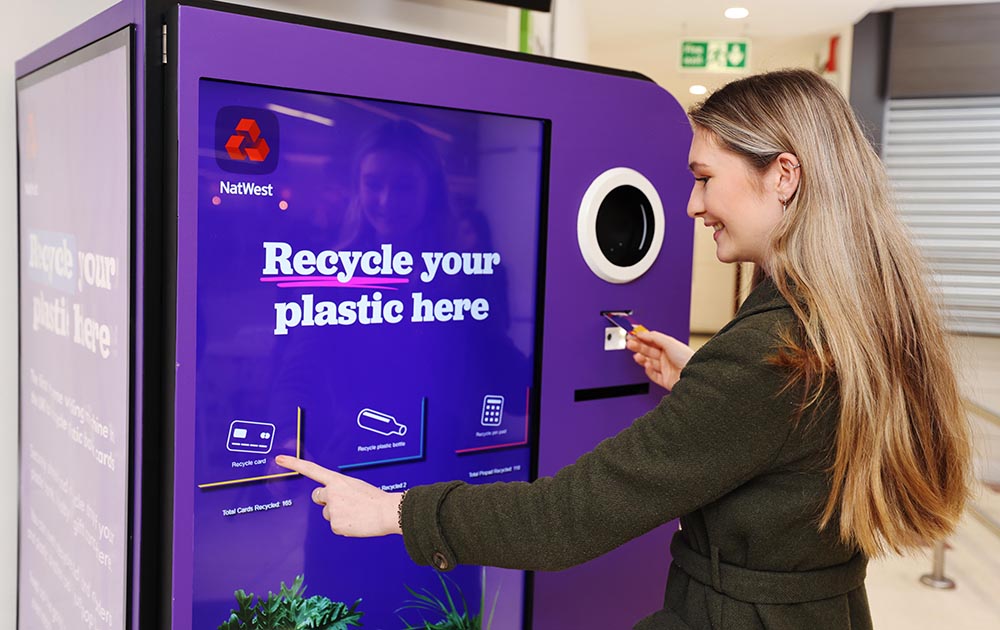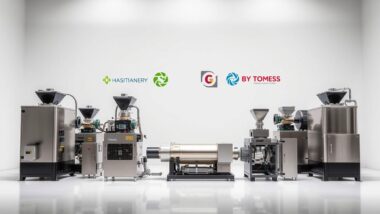How do reverse vending machines work? – And more questions answered.
Key Takeaways
- Reverse vending machines (RVMs) are automated devices that collect, sort, and recycle beverage containers like plastic bottles and aluminum cans.
- Users receive incentives such as cash refunds or vouchers for returning empty containers to RVMs.
- RVMs identify containers through barcode scanning and shape recognition, ensuring efficient sorting and recycling.
- These machines play a crucial role in boosting recycling rates and supporting environmental sustainability.
- Adopting RVMs globally can significantly reduce waste and promote a circular economy.
Understanding Reverse Vending Machines and Their Impact
Reverse vending machines (RVMs) are an innovative solution to the growing challenge of waste management and recycling. These machines serve as a convenient and efficient way for individuals to recycle beverage containers, such as plastic bottles and aluminum cans, while receiving rewards for their efforts. By understanding how RVMs work and their benefits, we can all play a part in creating a cleaner, more sustainable environment.

“Reverse Vending Machines on Recycling …” from www.acorecycling.com and used with no modifications.
Introduction to Reverse Vending Machines and Waste EPR
At their core, reverse vending machines are designed to encourage recycling by providing incentives to users who return their empty beverage containers. The concept of RVMs aligns with Extended Producer Responsibility (EPR), a policy approach that holds producers accountable for the entire lifecycle of their products, including post-consumer waste management. This approach not only encourages manufacturers to design more sustainable products but also promotes consumer participation in recycling efforts.
One of the key aspects of RVMs is their user-friendly interface, which makes the recycling process simple and accessible for everyone. When you approach an RVM, you can easily insert your empty containers into the machine, which then identifies, sorts, and stores them for recycling. In return, you receive a reward, such as a cash refund or a voucher, as a token of appreciation for your contribution to the environment.
“Reverse vending machines are a testament to how technology can drive positive environmental change by making recycling more accessible and rewarding for everyone.”
How Reverse Vending Machines Operate
The operation of a reverse vending machine involves several key steps that ensure the efficient collection and processing of recyclable materials. First, users insert their empty containers into the machine through a designated opening. The RVM then uses advanced technology to identify and sort the containers based on their material type and size. This process is crucial for ensuring that the collected materials can be properly recycled and reused. For those interested in broader recycling solutions, consider exploring reverse osmosis water vending machines as another innovative approach.
Core Mechanisms of Reverse Vending Machines
Understanding the core mechanisms of reverse vending machines can help us appreciate their role in waste management and recycling. These machines rely on a combination of identification, sorting, and storage technologies to efficiently process the containers they collect.
Container Identification Process
One of the most critical components of an RVM is its ability to accurately identify the type of container being deposited. This is typically achieved through a combination of barcode scanning and shape recognition technologies. By reading the barcode on a container, the machine can quickly determine its material type, size, and brand. Shape recognition further aids in identifying containers that may not have a readable barcode, ensuring that all eligible items are accepted for recycling.
This identification process is essential for ensuring that the collected materials are sorted correctly and can be effectively recycled. By accurately identifying each container, RVMs help prevent contamination of recycling streams and improve the overall efficiency of the recycling process.
Sorting and Compaction Techniques
Once a container has been identified, the reverse vending machine sorts it based on its material type. This sorting process is crucial for ensuring that the collected materials are processed and recycled appropriately. Different materials, such as plastic, glass, and aluminum, require different recycling methods, and proper sorting helps streamline this process.
In addition to sorting, many RVMs also compact the containers they collect. Compaction reduces the volume of the collected materials, allowing the machine to store more items before needing to be emptied. This not only increases the efficiency of the RVM but also reduces the frequency of collection and transportation, further minimizing the environmental impact of the recycling process.

“reverse vending machines/ Pfand system …” from www.reddit.com and used with no modifications.
Storage Systems in RVMs
After sorting and compaction, the containers are stored within the RVM until they are collected for recycling. The storage system is designed to maximize the machine's capacity, ensuring that it can accommodate a large number of containers before requiring emptying. This efficient storage system is a key factor in the success of reverse vending machines, as it allows them to operate continuously without frequent interruptions.
“By combining advanced identification, sorting, and storage technologies, reverse vending machines offer an efficient and effective solution for managing recyclable waste.”
Overall, the core mechanisms of reverse vending machines play a vital role in their ability to promote recycling and reduce waste. By understanding how these machines operate, we can better appreciate their impact on the environment and the importance of supporting their adoption in our communities.
User Interface and Ease of Use
One of the standout features of reverse vending machines is their user-friendly interface, designed to make the recycling process as straightforward as possible. When approaching an RVM, users are greeted with clear instructions displayed on a screen, guiding them through each step of the process. This includes inserting containers, waiting for identification, and receiving rewards.
Most importantly, the interface is intuitive, ensuring that people of all ages can participate in recycling efforts without any confusion. The touch-screen displays often provide real-time feedback, such as confirming the acceptance of a container and updating the user's reward balance. This immediate response helps build a positive recycling experience, encouraging repeat use and fostering environmentally friendly habits.
Regional Variations in Deposit Schemes
Deposit schemes can vary significantly from one region to another, influencing how reverse vending machines operate and the incentives they offer. In some areas, the deposit value might be a flat rate per container, while in others, it may vary based on the type of material or container size. For instance, a plastic bottle might have a different deposit value compared to an aluminium can.
These variations are often influenced by local recycling policies and economic factors. Therefore, users must familiarize themselves with the specific deposit schemes in their region. This knowledge not only maximizes the rewards they can earn but also ensures that they are contributing effectively to local recycling initiatives.
Environmental and Economic Benefits
Reverse vending machines offer a multitude of benefits that extend beyond individual rewards. They play a significant role in enhancing environmental sustainability by increasing recycling rates and reducing waste. By providing a convenient and rewarding way to recycle, RVMs encourage more people to participate in recycling programs, ultimately leading to a cleaner environment.
Besides environmental benefits, RVMs also contribute economically. They help reduce the costs associated with waste management by streamlining the collection and sorting processes. Additionally, the materials collected through RVMs are often of higher quality, making them more valuable for recycling and reducing the need for raw materials.
Impact on Recycling Rates
The introduction of reverse vending machines has had a profound impact on recycling rates worldwide. In regions where RVMs are widely used, recycling rates for beverage containers have significantly increased, sometimes reaching up to 98% return rates. This success is largely due to the convenience and incentives provided by these machines.
- Increased participation in recycling programs.
- Higher quality of collected recyclable materials.
- Reduction in landfill waste.
These improvements not only benefit the environment but also support local economies by creating jobs in the recycling industry and reducing the costs of waste disposal. As more people engage with RVMs, the positive effects on recycling rates continue to grow, making a substantial difference in waste management practices.
Furthermore, the data collected by RVMs can be used to improve recycling strategies and policies. By analyzing the types and quantities of containers returned, policymakers can make informed decisions to enhance recycling efforts and address any challenges that may arise.
Energizing the Circular Economy
Reverse vending machines are a crucial component of the circular economy, a model that focuses on reducing waste and maximizing the use of resources. By collecting and recycling beverage containers, RVMs help close the loop in the lifecycle of these products, ensuring that materials are reused rather than discarded.
This approach not only conserves natural resources but also reduces the environmental impact of manufacturing new products. By supporting the circular economy, RVMs contribute to a more sustainable future, where waste is minimized, and resources are used efficiently.
Contributions to Waste Management
In addition to their role in recycling, reverse vending machines contribute significantly to waste management efforts. By providing a convenient and efficient way to collect and sort recyclable materials, RVMs reduce the burden on traditional waste management systems. This allows for more focused efforts on managing non-recyclable waste and improving overall waste management practices.
Moreover, the widespread adoption of RVMs can lead to increased public awareness about the importance of recycling and waste reduction. As more people engage with these machines, the cultural shift towards more sustainable waste management practices becomes more pronounced, ultimately benefiting both the environment and society.

“Tomra reverse vending machine offers …” from www.recyclingtoday.com and used with no modifications.
Challenges and Future of Reverse Vending Machines
Despite their many benefits, reverse vending machines face several challenges that need to be addressed to ensure their continued success and expansion. By understanding these challenges, we can work towards overcoming them and maximizing the potential of RVMs in promoting recycling and sustainability.
Addressing Operational Challenges
One of the primary challenges facing reverse vending machines is maintaining their operational efficiency. As with any technology, RVMs require regular maintenance and updates to function optimally. Ensuring that these machines are always in good working condition is crucial for providing a seamless recycling experience for users.
Additionally, RVMs must be equipped to handle a wide variety of container types and sizes. As new beverage products enter the market, machines need to be updated to recognize and accept these containers, ensuring that they continue to serve as an effective recycling solution.
Another challenge is ensuring that RVMs are accessible to everyone, regardless of location. While these machines are becoming more common in urban areas, expanding their reach to rural and underserved communities is essential for maximizing their impact on recycling rates.
Technological Advancements and Innovations
To address these challenges, ongoing technological advancements and innovations are crucial. Developing more advanced identification and sorting technologies can improve the efficiency and accuracy of RVMs, ensuring that they remain effective in promoting recycling. For instance, innovations in environmentally responsible equipment can complement these advancements in recycling technology.
Furthermore, integrating RVMs with digital platforms can enhance user engagement and provide additional incentives for recycling. For example, mobile apps can be used to track recycling progress, offer rewards, and provide information on local recycling initiatives, making the recycling process more engaging and rewarding for users.
Expanding Adoption Globally
The global expansion of reverse vending machines is essential for maximizing their impact on recycling and sustainability. By promoting the adoption of RVMs in countries where recycling rates are low, we can help drive positive environmental change on a global scale. For instance, achieving zero waste to landfill is a significant goal that can be supported by the widespread use of RVMs.
To achieve this, collaboration between governments, businesses, and communities is crucial. By working together to implement policies and initiatives that support the use of RVMs, we can create a more sustainable future for everyone. For instance, exploring reverse vending machine systems can be a significant step towards achieving sustainability goals.
Conclusion and Call to Action
- Reverse vending machines (RVMs) provide a convenient and efficient way to recycle beverage containers.
- They play a significant role in increasing recycling rates and promoting environmental sustainability.
- Technological advancements continue to enhance the effectiveness of RVMs.
- Global adoption of RVMs can significantly reduce waste and support a circular economy.
- Public participation is crucial for the success of reverse vending machines.
Reverse vending machines have proven to be an invaluable tool in the fight against waste and environmental degradation. By making recycling more accessible and rewarding, they encourage individuals to actively participate in sustainable practices. The benefits of RVMs extend beyond individual rewards, contributing to a cleaner environment and a more sustainable future.
As we continue to face environmental challenges, the role of RVMs becomes increasingly important. By supporting the expansion and adoption of these machines, we can work towards a world where recycling is the norm, and waste is minimized. Together, we can make a significant impact on our planet's health and ensure a sustainable future for generations to come. For more insights, explore the concept of zero waste to landfill.
Therefore, I encourage everyone to take advantage of reverse vending machines whenever possible. By doing so, you not only contribute to environmental sustainability but also support the development of a circular economy that benefits both society and the planet.
Summary of Key Points
Reverse vending machines offer a user-friendly and efficient way to recycle beverage containers, providing incentives for participation. They play a crucial role in increasing recycling rates and supporting environmental sustainability. By understanding how RVMs operate and their benefits, we can all contribute to a cleaner, more sustainable future.
Encouraging Public Participation
Public participation is essential for the success of reverse vending machines. By using these machines regularly, individuals can help increase recycling rates and reduce waste. It's important to familiarize yourself with the specific deposit schemes in your region to maximize the rewards and contribute effectively to local recycling initiatives.
Moreover, spreading awareness about the benefits of RVMs can encourage others to participate in recycling efforts. By sharing information with friends and family, you can help promote a culture of sustainability and environmental responsibility.
“The success of reverse vending machines depends on our collective efforts to embrace recycling and support sustainable practices.”
By working together, we can create a positive impact on the environment and pave the way for a more sustainable future.

“Reverse Vending Machines tackle plastic …” from greenbusinessjournal.co.uk and used with no modifications.
Frequently Asked Questions (FAQ)
Reverse vending machines are a fascinating technology that many people are curious about. Below are some frequently asked questions to help you understand how these machines work and their impact on recycling. For more detailed insights, you can explore this guide on vending machine systems.
How do reverse vending machines identify different types of containers?
Reverse vending machines use a combination of barcode scanning and shape recognition technologies to identify different types of containers. By reading the barcode, the machine can determine the material type, size, and brand of the container. Shape recognition further aids in identifying containers without readable barcodes, ensuring accurate sorting and recycling.
What incentives do users typically receive from RVMs?
Users of reverse vending machines typically receive incentives such as cash refunds, vouchers, or discounts for returning empty beverage containers. The specific incentives vary depending on the region and the deposit scheme in place. These rewards encourage individuals to participate in recycling efforts and contribute to environmental sustainability.
Additionally, some RVMs offer digital rewards through mobile apps, allowing users to track their recycling progress and earn additional benefits.
Are reverse vending machines available everywhere?
While reverse vending machines are becoming increasingly common in urban areas, their availability varies depending on the region. Some countries have widely adopted RVMs as part of their recycling programs, while others are still in the process of implementing these machines.
Efforts are being made to expand the reach of RVMs to rural and underserved communities, ensuring that everyone has access to convenient recycling options.
It's important to check with local authorities or recycling programs to find the nearest reverse vending machine locations in your area.
- Check with local recycling programs for RVM locations.
- Advocate for the expansion of RVMs in your community.
- Participate in local recycling initiatives to support the adoption of RVMs.
By increasing the availability of RVMs, we can enhance recycling efforts and promote environmental sustainability on a larger scale.
How do these machines affect local recycling programs?
Reverse vending machines positively impact local recycling programs by increasing participation rates and improving the quality of collected recyclable materials. They provide a convenient and efficient way for individuals to recycle, reducing the burden on traditional waste management systems.
What are some challenges faced by reverse vending machines?
Despite their many benefits, reverse vending machines face challenges such as maintaining operational efficiency, handling a variety of container types, and ensuring accessibility for all communities. Addressing these challenges requires ongoing technological advancements and collaboration between governments, businesses, and communities.
By overcoming these obstacles, we can maximize the potential of RVMs in promoting recycling and sustainability, ultimately benefiting both the environment and society.







